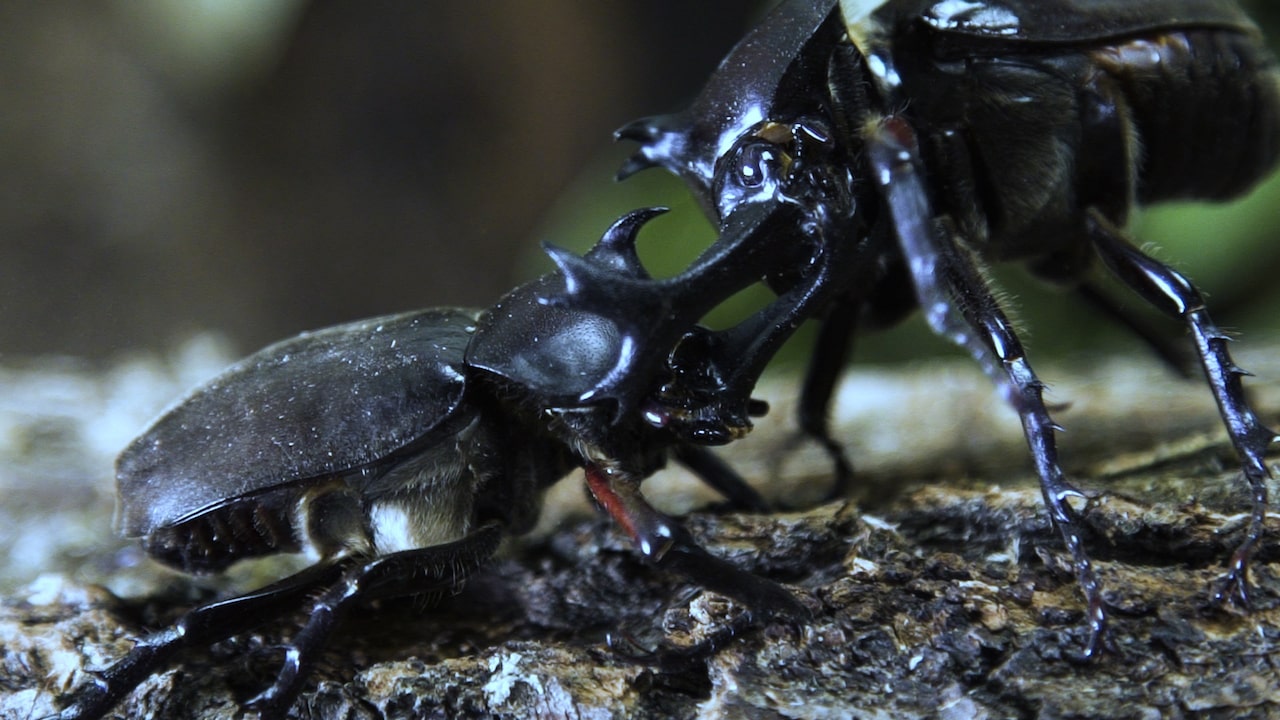For male Japanese rhinoceros beetles trying to woo a lady, they must endure a beetle battle royale. Opposing males step into the arena and a fierce jousting match begins—the beetles clashing and trying to pry each other with their long, pronged horns. The male that successfully ejects the weaker competitors is the victor. But, there’s a twist in this story of love and war.

Two biologists at the University of Montana, graduate student Jillian del Sol and animal weapon specialist Doug Emlen, are studying these Japanese rhinoceros beetles to get to the bottom of their complex sexual selection.
Sexual selection can often lead to extreme differences in traits between sexes—take turkeys, for example. In the case of the Japanese rhinoceros beetles, males grow to the size of a chicken egg and invest a lot in their big weapons. They use their massive horns to defend sap territories, where the beetles eat. Whichever male controls the territory gets access to the females that flock there for food.
“All the time they’re fighting, they’re not eating,” Emlen says. “That’s the irony, they’re standing over the food source. That has led in [the general mating] system to intense selection for the ability to fight.”
[Every spring, the male sage-grouse struts his stuff.]
But the brutal battle isn’t the end of the story. “When the winning males finally get the females, we noticed that the male would spend up to a few hours singing to females,” says del Sol.
Despite putting so much energy behind their brawls and massive horns, the male beetle still needs to woo the female by performing their smooching, grinding, complex love song. In the lab, del Sol is recording the mating courtship songs of various males to understand what they are trying to communicate to the females. You’d think this elaborate mating ritual would be enough to an impress a potential mate, but a male might still leave empty-handed.
“They won’t mate with the male,” says Emlen. “They’ll reject the male, they’ll resist that male. For the winner go the spoils supposedly, except not so much.”
Credits
Produced by Luke Groskin
Music by Jeramiah Jones, Audio Network, and Pond5
Article written by Lauren J. Young
Additional Footage and Stills Provided by Jillian Delsol
Pond5, Louis Hollis (CC BY 2.0), Carol Burch-Brown (CC BY 2.0),
Flora Lichtman, Glacier National Park, (CC BY 2.0), Ian A. Nelson (CC BY 2.0)
Special Thanks to Annie Nero
Meet the Producers and Host
About Luke Groskin
@lgroskinLuke Groskin is Science Friday’s video producer. He’s on a mission to make you love spiders and other odd creatures.
About Lauren J. Young
@laurenjyoung617Lauren J. Young was Science Friday’s digital producer. When she’s not shelving books as a library assistant, she’s adding to her impressive Pez dispenser collection.
